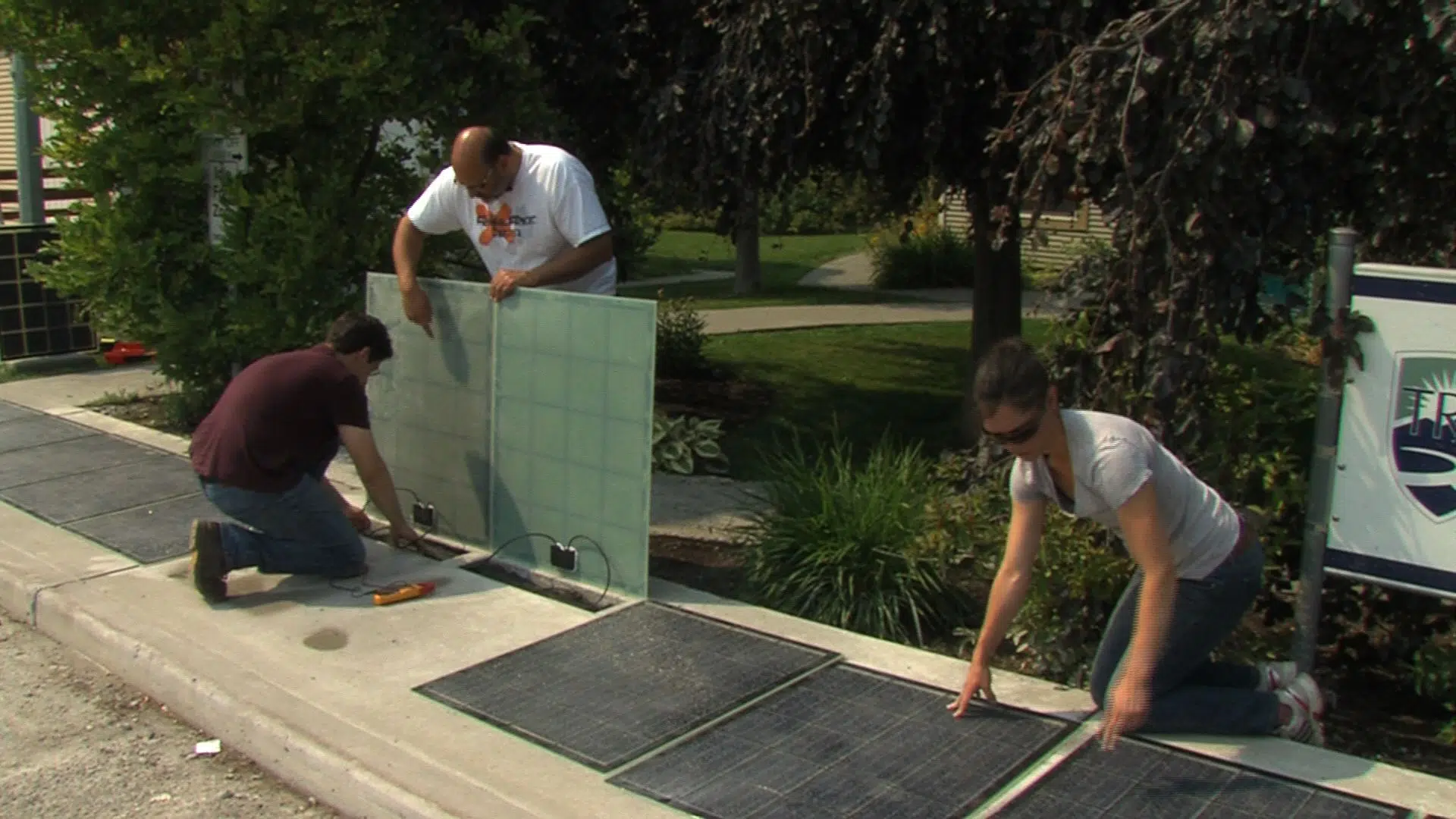
North America’s first solar powered sidewalk installed at TRU
KAMLOOPS — Two years into the making, a solar electric road surface was installed at Thompson Rivers University this week.
The project is the brainchild of an Environmental Studies professor at the University and is being touted as the first of its kind in North America.
It isn’t your average electrical job.


